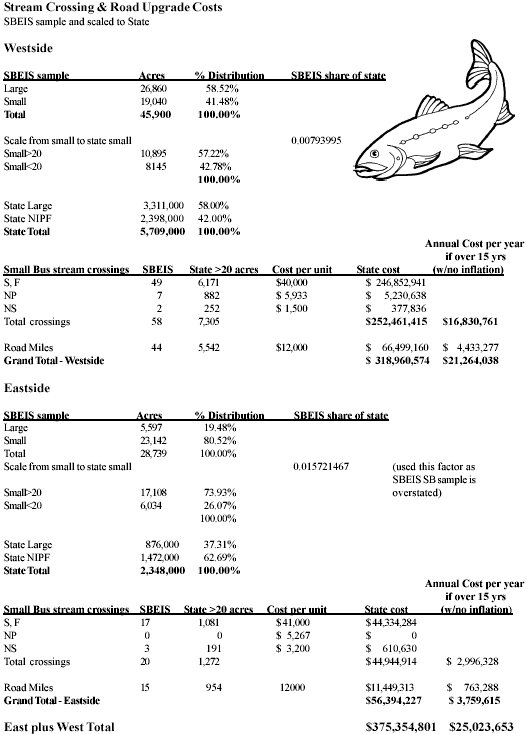 |
 |
 |
 |


Fact Sheet #04
NIPF Road Upgrade and Stream Crossing Costs under Washington Forest
and Fish Regulations
|
2001 Save or Print a PDF copy of Fact Sheet #04
While using these cost estimates is subject to a substantial degree of uncertainty, they appear to be the best that are available. Cost estimates for each stream crossing type were provided by DNR, a large company, and several forestry consultants/engineers. These costs were applied to the SBEIS sample of 98 sections for western Washington and 66 sections in eastern Washington. These samples were then scaled up to the total forested acreage in the state based on the USFS Forest Inventory Analysis for state and private lands. The Small Business sample was scaled to the total non-industrial acres in the state and also reduced to the share not affected by the 20-acre exemption. It should be noted that a large percentage of small businesses on the Westside are exempt. The estimated small business road and stream crossing improvement costs are as shown on page 2. The SBEIS study assumes a 5.8% discount rate and spreads these costs over 15 years to arrive at a discounted present value for the total cost. There is little doubt that these costs will be front loaded in time, however the actual time pattern of expenditures is very uncertain. If the 15-year period is a reasonable guess, the annual cost rate would be about $25 million per year. The more critical issue is, can the small owners source the cash
flow for these costs? An acceptable road plan must be in place before
one can obtain a harvest permit resulting in a large cost obligation
before revenue would be available from harvesting. The acceleration
of some harvests to provide some of the cash for road and stream
crossing cash needs can be expected, as this is one of the few available
sources of funds for small owners.
|



